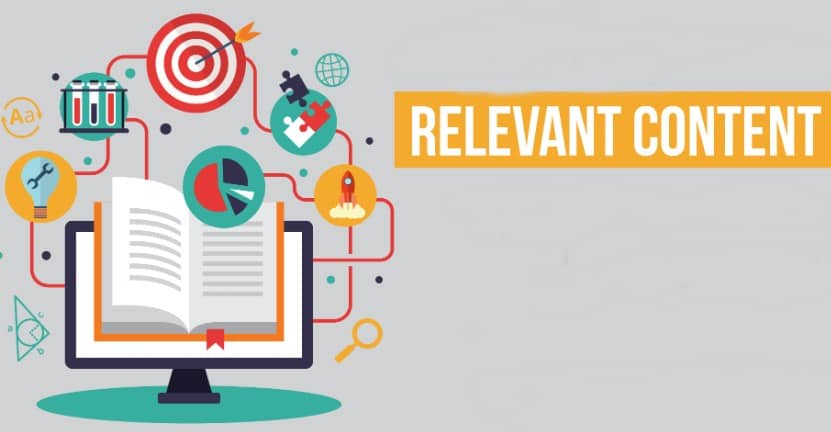Good quality content is a significant part of any modular marketing strategy. Content helps you demonstrate your subject matter expertise, increase brand recognition, connect with the audience, and boost website traffic. A well-written piece of content will help you accomplish various business and marketing objectives.
Your online presence depends on the frequency and relevancy of the content you share. Hence, it becomes difficult and time-consuming to create fresh content regularly.
Content repurposing can save you from this hectic trouble. Lately, it has become one of the most popular content marketing techniques. Content repurposing strategy can save you time and money; therefore, you must consider utilizing it for your business. This blog will define content repurposing before exploring its benefits and best practices.
Repurposing content involves using it again differently, in its entirety or in pieces, to increase its audience. You can repurpose your content by redefining it to create a different version to fulfill other purposes or marketing platforms.
Content repurposing strategy helps you focus on several platforms your target audiences use to consume content, reaching a larger audience. Moreover, content repurposing offers a quick fix for the occasionally challenging problem of content ideation. It allows crafting content on an already-existing concept and reshaping it rather than having to come up with brand-new concepts.
Content repurposing has several key benefits associated with it. It can provide significant advantages over your competition and boost your business through better SEO, engagement, online presence, and much more.
Your targeted keywords will be more efficient when there is more content on the same subject. Moreover, you can repurpose your content outside your website through high-quality backlinks while having complete control over the anchor text.
Content repurposing allows you to use a piece of content in various formats. You can repurpose blog content into a video, infographic, or podcast. This versatility allows you to offer the audience the content they prefer and consume.
You widen the audience for your content by delivering it in various formats on different platforms. You can explore these marketing platforms without worrying about fresh content. For example, repurposing content for social media will help you leverage its algorithm, reaching and engaging a larger audience.
You can update old content and bring it back into the spotlight. You may have a blog post discussing a trend. Repurposing makes it easy to upgrade the content as the trend changes. Whatever the situation, adopting an old piece of content and modernizing it to reflect current events will help you keep it relevant while attracting audiences.
You need not repurpose all the old or existing content. Only your top-performing content should be repurposed. You can consider these factors while choosing the content for repurposing:
Analyze your Google Analytics to discover which pieces have been the most read in the last 12 months. These will be the content produced on a compelling, relevant, and well-crafted topic. Repurposing doesn’t always mean creating something new; sometimes, it just means repurposing blog content into a detailed infographic.
Trends and technologies change every day and keep on evolving. The same goes for the interests and preferences of your audience. They might not like something today that they liked a week ago. In that case, you can repurpose your old content, update it, and make it more relevant to the current market.
A well-written and optimized content will not always yield the best results. Sometimes such content’s performance goes down with time, subject to different reasons. You must analyze these reasons and then improve the content by repurposing it.
A successful content repurposing strategy should try to be as diverse as possible. You can turn a blog post and other interesting content into infographics, videos, and slides to increase exposure and social media shares.
You can then figure out how to repurpose existing content and share it through different platforms and channels to increase visibility. Here are some of the best ways to repurpose your content:
If you publish blogs, regularly updating them should be one of your top priorities. It is one of the most important components of any strategy. It is a possibility that your old blogs might get lost due to the high accessibility or relevancy of other blogs on similar subjects. Simple edits and updates to old blog posts can be beneficial and valuable.
You will also save time and work by updating older blog posts rather than creating new ones daily. All you need to do is make the repurposed content relevant and insightful, as most of the content has already been published.
Expanding your existing content into an eBook may seem obvious, and it is astonishing how many excellent eBooks started out as blog articles. It will be easier to publish the content in an eBook because you already have a useful database of knowledge in your blogs. These eBooks will make it easier for users to find specific information on a subject.
Take your time and research properly if you write an eBook based on your blog postings. Add images, analytical data, case studies, etc., and make the eBook something that justifies the extra expense. Your work will become widely available and offline through an eBook. It will also help boost your conversion rates by acquiring leads and observing who is interested in your content through downloads.
You can repurpose your eBooks into a different format to extend their reach and efficiency. Learning courses are among the most sorted out formats that you may use. These courses may assist businesses in building their brand awareness and credibility while showcasing their subject-matter expertise and thought leadership.
Here, it is ideal for dissecting each chapter and creating a lecture in written or video form. You can also add questionnaires to improve the learning experience for individuals who commit themselves to your course.
People nowadays prefer videos more to written content. With platforms like YouTube, reaching a much larger audience has become seemingly easier. Therefore, you can repurpose your blog content into YouTube videos, whether it is walkthroughs, guides, etc. Some of your blogs that were not performing well might perform better in video format.
You can also optimize your videos for SEO and boost your ranking. These blogs turned videos can also be published on your website’s landing page, increasing the user-engagement time. Content repurposing through videos can open many possibilities to connect with the audience.
With the emergence of social media came short-form content. The same gave birth to short video content, including Instagram and Facebook Reels, TikTok, and YouTube Shorts. People spend hours scrolling through these short videos. You can leverage this and repurpose content for social media.
Choose your top-performing YouTube videos and convert them into several short videos. You can then post these videos for days without a break over social media platforms. This content repurposing strategy will help garner more views and engagement you might have missed if not for recycling it.
Data is as necessary as a marketing strategy for any business. Without data, there can be no analytics, such as your customer preferences, engagement, reviews, etc. In a business, data fosters confidence to evolve and grow.
Positive data boosts credibility and establishes authority. This content repurposing tactic promotes your brand and product while educating your audience about how your brand is performing and helps them in making educated decisions. For example, you can turn your customer feedback and testimonials into text or video posts and share them on social media. This way, your brand story, success, and experience can reach many more people.
Let’s say you just organized an impressive webinar that drew a huge audience. A resounding success! But what after it ends? Unfortunately, some people might miss and won’t be able to attend your webinar. Repurposing webinars into videos can help you regain these missed visitors and leads.
You don’t have to waste that excellent webinar. Its excellent content will perpetuate if you turn that webinar into a YouTube video, attracting more people. It will also showcase your expertise and be an asset to your website.
Conclusion
One of the most crucial things to keep in mind when content repurposing is that it should save you time. You can use various platforms to increase audience intake in the SERP for your repurposed content.
If you repurpose your content correctly, you may get a lot of value from it. It’s a powerful hack with advantages for SEO, online presence, and many other things. Even before you begin writing a new blog post or article, you might find it helpful to consider your possibilities for repurposing. Your content repurposing strategy will be successful if you add value to the original content.
Do you still have a question? Contact us today or visit our website and read more informative blogs and articles.







Helping Agencies & Marketers achieve their true potential with our targeted, measurable, and result-driven SEO Solutions.
Feel confident in every purchase you make with us. If for any reason we are not able to keep up to our words and you aren't satisfied, contact us within 7 days of receiving your report & we'll ensure to make it right, if not, we provide a full refund.